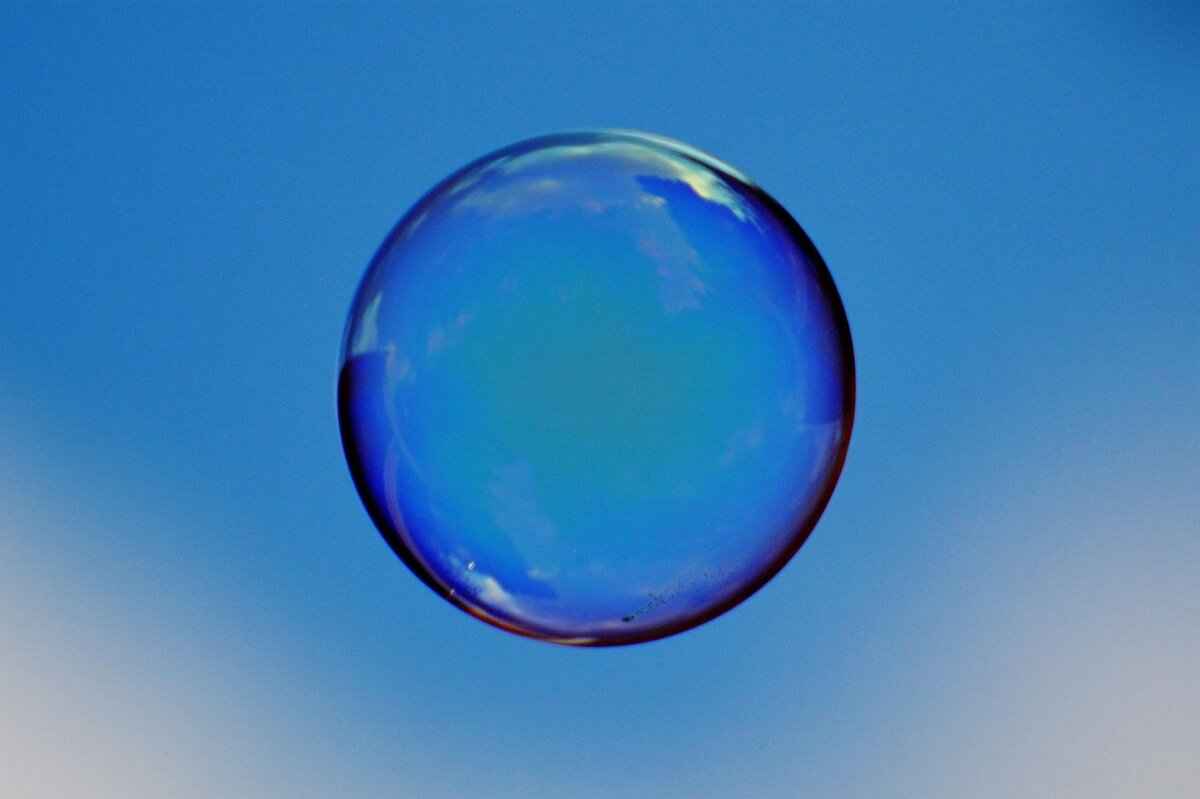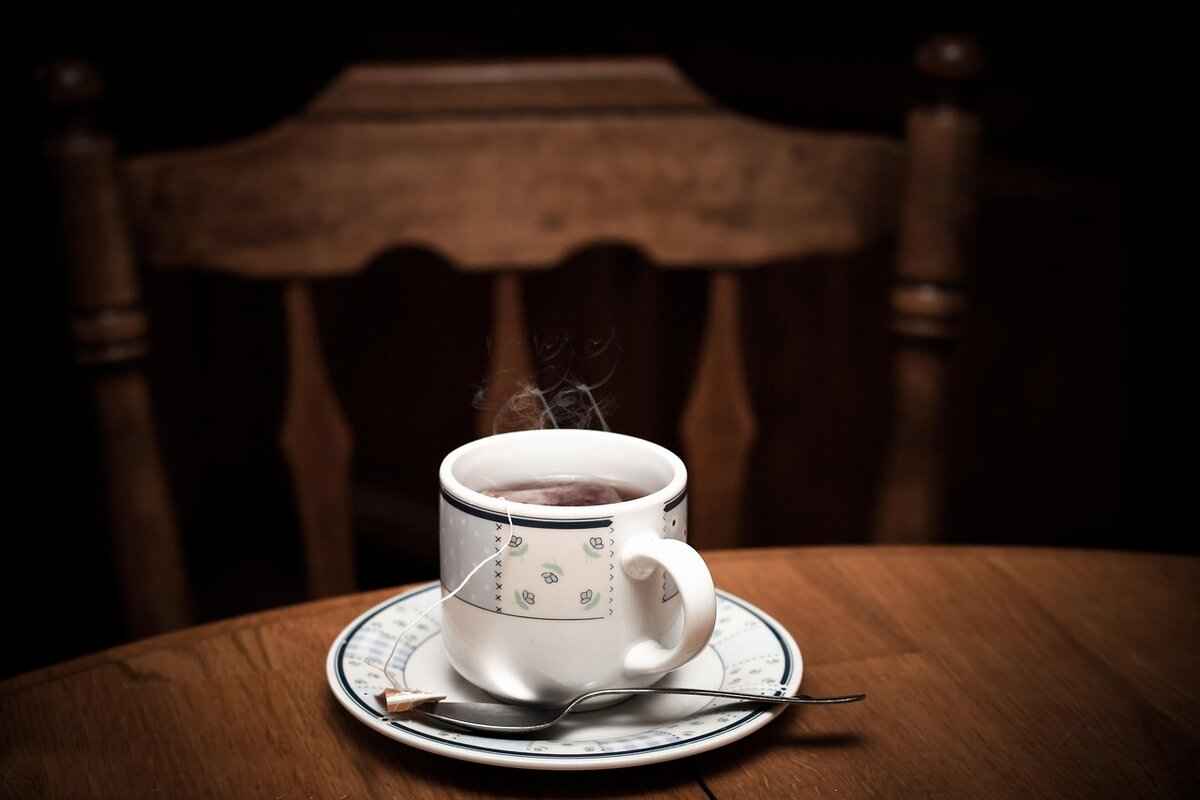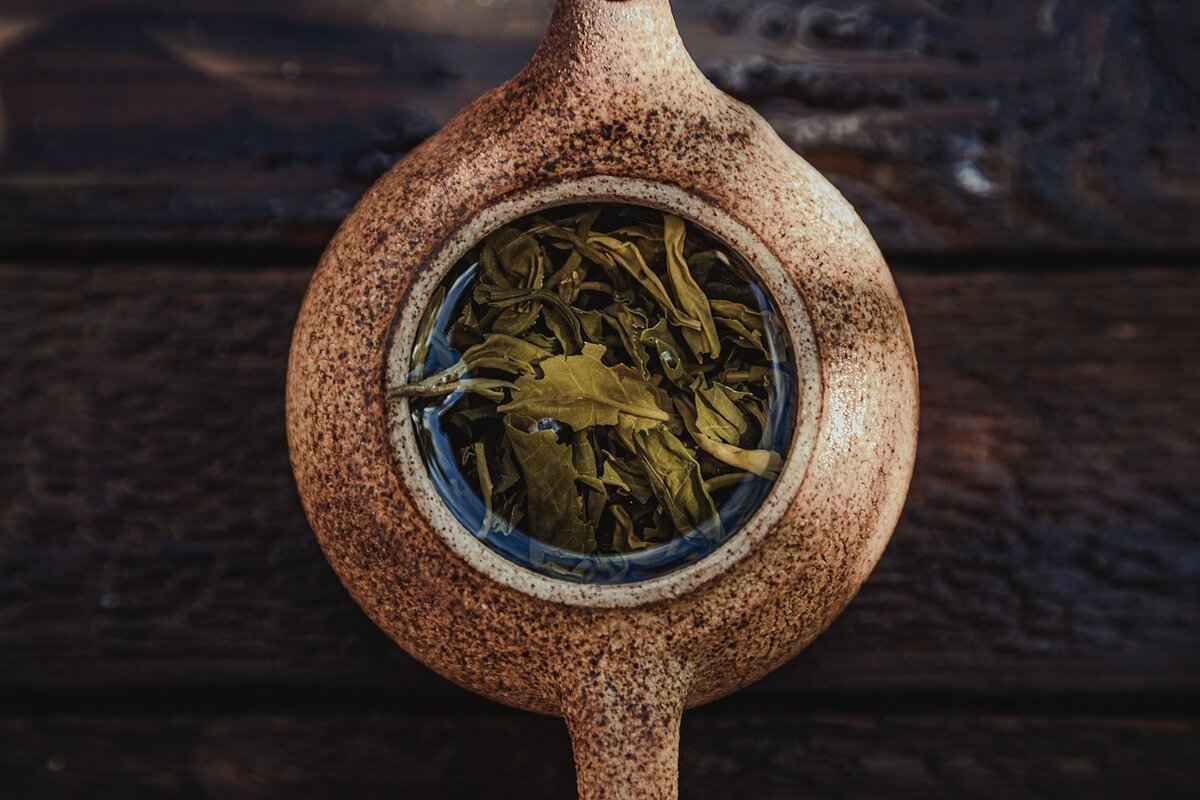This article explores the rise of bubble tea as a global phenomenon, examining its origins, popularity, and innovative variations that have emerged in contemporary culture.
What is Bubble Tea and Where Did It Originate?
Bubble tea, also known as boba or pearl milk tea, originated in Taiwan during the 1980s. This delightful beverage combines tea, milk, and chewy tapioca pearls, creating a unique and enjoyable drinking experience. Over the years, it has evolved into a versatile drink enjoyed by people of all ages.
Why Has Bubble Tea Gained Global Popularity?
The global appeal of bubble tea can be attributed to its customizable nature and vibrant aesthetics. Consumers can choose from a variety of flavors, toppings, and sweetness levels, making it a personalized experience. Additionally, the visually appealing drinks are highly shareable on social media platforms like Instagram, further fueling its popularity.
How Social Media Influenced Bubble Tea Trends
Social media platforms have played a crucial role in the rise of bubble tea, with influencers and enthusiasts showcasing their favorite flavors and creative presentations. Viral trends, such as the cheese tea and fruit tea variations, have captured the attention of consumers worldwide, leading to a surge in demand.
Are There Unique Flavors and Variations?
Bubble tea has evolved beyond traditional flavors. Today, you can find options like fruit-infused teas, matcha, and even savory versions. These innovative twists keep the beverage fresh and exciting, appealing to adventurous consumers looking for new taste experiences.
What Are the Health Considerations?
While bubble tea is undeniably delicious, it often contains high levels of sugar and calories. Consumers should be aware of these factors, especially those seeking healthier options. Many shops now offer lower sugar and organic ingredients, catering to health-conscious customers.
What Role Do Local Shops Play in Bubble Tea Culture?
Local bubble tea shops contribute significantly to the culture by offering unique recipes and local ingredients. This fosters community engagement and provides a personalized experience for customers. Many shops also host events and workshops, further enhancing the local bubble tea scene.
How is Bubble Tea Adapting to Modern Dietary Trends?
In response to the growing demand for health-conscious beverages, bubble tea shops are introducing alternatives like plant-based milks and reduced sugar options. This adaptability makes bubble tea more accessible to a wider range of dietary preferences, ensuring it remains relevant in today’s market.
What Innovations Are Emerging in Bubble Tea?
Innovations such as bubble tea kits for home preparation and eco-friendly packaging are gaining traction. These trends reflect a shift towards sustainability and convenience in the bubble tea industry, appealing to environmentally conscious consumers.
How Do Different Cultures Interpret Bubble Tea?
Various cultures have embraced bubble tea, adapting it to local tastes and ingredients. For instance, in some regions, you may find local fruit flavors or unique toppings that reflect regional preferences. This cultural exchange enriches the global bubble tea landscape, making it a truly international beverage.
What’s Next for the Bubble Tea Industry?
The future of bubble tea looks promising, with potential for further growth and innovation. Brands are exploring new flavors, sustainable practices, and global expansion, ensuring bubble tea’s place in the ever-evolving beverage market.

What is Bubble Tea and Where Did It Originate?
Bubble tea, also known as boba or pearl milk tea, is a delightful beverage that has captured the hearts of many around the world. Its origins trace back to the vibrant streets of Taiwan during the 1980s, where it was first created. The drink combines a base of tea with milk and chewy tapioca pearls, resulting in a unique and enjoyable drinking experience that has evolved significantly over the years.
Initially, bubble tea was a simple concoction made with black tea, milk, and sugar, accompanied by the signature tapioca pearls. However, as its popularity soared, innovative variations began to emerge. Today, bubble tea can be found in a plethora of flavors and styles, ranging from fruity infusions to creamy matcha blends. This versatility is one of the key factors behind its global appeal.
The global rise of bubble tea can be attributed to its customizable nature and the influence of social media. Customers can personalize their drinks by choosing different types of tea, sweetness levels, and toppings, which makes it an engaging experience. The vibrant colors and textures of bubble tea make it visually appealing, leading to its shareability on platforms like Instagram and TikTok.
Social media platforms have been instrumental in the popularization of bubble tea. Influencers and food bloggers frequently showcase various flavors and unique presentations, creating viral trends that entice new customers to try the beverage. This online presence has not only boosted sales but has also fostered a sense of community among bubble tea enthusiasts.
Indeed, bubble tea has evolved far beyond its traditional roots. Nowadays, you can find an array of flavors, including fruit-infused teas, matcha, and even savory options. Some shops have started experimenting with ingredients like cheese foam or flavored jellies, keeping the beverage fresh and exciting for consumers. This constant innovation ensures that bubble tea remains relevant and appealing, catering to diverse tastes.
While bubble tea is undeniably delicious, it is essential to consider its nutritional content. Many bubble tea drinks are high in sugar and calories, which can be a concern for health-conscious consumers. Awareness of these factors is crucial, and many shops are now offering alternatives such as reduced sugar options or plant-based milks to accommodate those seeking healthier choices.
Local bubble tea shops play a significant role in nurturing the culture surrounding this beverage. They often create unique recipes using local ingredients, which fosters community engagement and provides a personalized experience for customers. This local touch not only enhances the taste but also connects customers with their community.
In response to the growing demand for healthier options, bubble tea shops are adapting by introducing plant-based milks, organic ingredients, and lower sugar alternatives. This adaptability makes bubble tea more accessible to a broader audience, including those with dietary restrictions or preferences.
The bubble tea industry is witnessing several exciting innovations, such as bubble tea kits for home preparation and eco-friendly packaging solutions. These developments reflect a shift towards sustainability and convenience, catering to the evolving needs of consumers while maintaining the essence of this beloved beverage.
Bubble tea has transcended borders, with various cultures embracing and adapting it to their local tastes. From unique flavor combinations to regional ingredients, these adaptations enrich the global bubble tea landscape, making it a truly international phenomenon.
As bubble tea continues to grow in popularity, its future looks bright, with endless possibilities for flavor exploration and cultural integration.

Why Has Bubble Tea Gained Global Popularity?
Bubble tea, a delightful concoction of tea, milk, and chewy tapioca pearls, has taken the world by storm. Its global popularity can be traced back to several key factors that resonate with diverse audiences. In this section, we will explore the reasons behind its meteoric rise and why it continues to captivate consumers worldwide.
The global appeal of bubble tea can be attributed to its customizable nature and its strong presence on social media platforms. Consumers are drawn to the idea of creating a drink that reflects their personal tastes and preferences. With a wide array of bases, flavors, and toppings to choose from, each bubble tea experience can be uniquely tailored. This level of personalization not only enhances customer satisfaction but also encourages repeat visits.
Furthermore, the vibrant colors and intriguing textures of bubble tea make it an ideal candidate for sharing on social media. Platforms like Instagram and TikTok have become hotbeds for bubble tea content, where users showcase their colorful drinks, often adorned with eye-catching toppings like fruit jellies or whipped cream. This visual appeal is a significant factor in its popularity, as people are more likely to try beverages that they see trending online.
Social media has revolutionized the way trends emerge and spread, and bubble tea is no exception. Influencers and food bloggers have played a crucial role in popularizing various flavors and creative presentations. Viral challenges and hashtags related to bubble tea have further fueled consumer interest, leading to a surge in new shop openings and flavor innovations. As users share their experiences, they contribute to a communal culture that celebrates this beloved beverage.
Bubble tea has evolved significantly since its inception, with shops now offering an impressive range of flavors that go beyond the traditional milk tea. Options such as fruit-infused teas, matcha, and even savory versions have emerged, appealing to a broader audience. This constant innovation keeps the beverage fresh and exciting, ensuring that there is always something new for consumers to try.
While bubble tea is undeniably delicious, it is essential to consider its nutritional content. Many bubble tea drinks can be high in sugar and calories, which raises health concerns for some consumers. As awareness of dietary health grows, many bubble tea shops are now offering healthier alternatives, such as reduced sugar options and plant-based milks, catering to the needs of health-conscious individuals.
Local bubble tea shops play a significant role in shaping the culture surrounding this beverage. By offering unique recipes and incorporating local ingredients, these establishments foster a sense of community and engagement. Customers often feel a personal connection to their local shops, which enhances the overall bubble tea experience.
In response to the growing demand for healthier options, bubble tea shops are adapting their menus to include plant-based alternatives, organic ingredients, and reduced sugar offerings. This shift not only caters to diverse dietary preferences but also reflects a broader trend towards health and sustainability in the food and beverage industry.
As the bubble tea industry continues to grow, innovative ideas are emerging to enhance the consumer experience. For instance, bubble tea kits for home preparation are gaining popularity, allowing enthusiasts to recreate their favorite drinks in the comfort of their own homes. Additionally, eco-friendly packaging solutions are being introduced, aligning with the increasing consumer demand for sustainability.
Bubble tea has transcended cultural boundaries, with various regions adapting it to local tastes and ingredients. This cultural exchange results in unique versions of bubble tea that reflect regional flavors and preferences, enriching the global bubble tea landscape.
In conclusion, the global popularity of bubble tea can be attributed to its customizable nature, vibrant presentation, and the impact of social media. As it continues to evolve, bubble tea remains a beloved beverage that appeals to a wide audience, ensuring its place in the beverage market for years to come.
How Social Media Influenced Bubble Tea Trends
In recent years, social media has dramatically transformed the way we discover and consume food and beverages, and bubble tea is no exception. This trendy drink, originally from Taiwan, has gained immense popularity worldwide, largely due to its vibrant visuals and shareable nature on platforms like Instagram, TikTok, and Facebook. The unique combination of flavors, textures, and colors makes bubble tea an ideal candidate for social media exposure, leading to its rapid rise as a global phenomenon.
Influencers play a pivotal role in the marketing of bubble tea. By sharing their experiences with different flavors and creative presentations, they attract a large audience eager to try the latest trends. From colorful fruit-infused teas to elaborate toppings like whipped cream and edible glitter, influencers showcase the drink’s versatility. Their posts often go viral, leading to increased consumer interest and foot traffic to local bubble tea shops.
The visual appeal of bubble tea cannot be overstated. With its array of colors and textures, the drink is a feast for the eyes. Many bubble tea shops have capitalized on this by offering aesthetically pleasing presentations, such as layered drinks or those served in unique containers. This emphasis on presentation encourages customers to share their experiences online, further fueling the drink’s popularity.
- Seasonal Flavors: With the changing seasons, bubble tea shops often introduce limited-time flavors that are heavily promoted on social media. For instance, pumpkin spice bubble tea in the fall or refreshing watermelon flavors in the summer.
- DIY Kits: Influencers have also popularized DIY bubble tea kits, allowing consumers to create their own beverages at home. This trend not only engages audiences but also promotes creativity in flavor combinations.
- Health-Conscious Options: As consumers become more health-conscious, many influencers are highlighting bubble tea options that use natural sweeteners or plant-based ingredients, catering to a wider audience.
Local bubble tea shops are increasingly using social media to connect with their communities. By sharing customer testimonials, behind-the-scenes content, and interactive polls, these shops foster a sense of community and engagement. Additionally, many shops run social media promotions or contests, encouraging customers to share their bubble tea experiences in exchange for discounts or freebies.
While social media offers numerous opportunities for marketing, it also presents challenges. The fast-paced nature of social media trends means that bubble tea shops must constantly innovate to stay relevant. Additionally, negative reviews or feedback can spread quickly, potentially impacting a shop’s reputation. Therefore, maintaining a positive online presence is crucial for success.
The future of bubble tea is likely to be shaped by ongoing social media trends. As new platforms emerge and consumer preferences evolve, bubble tea shops will need to adapt their marketing strategies accordingly. This may involve embracing new technologies, such as augmented reality, to enhance the customer experience or collaborating with influencers to reach broader audiences.
In conclusion, social media has undeniably played a crucial role in the popularization of bubble tea. By leveraging the platform’s visual appeal and the influence of key figures, bubble tea has transformed from a local delicacy into a global trend. As the industry continues to evolve, the interplay between social media and bubble tea culture will remain a significant factor in its growth.
Are There Unique Flavors and Variations?
Bubble tea, a beloved beverage that has captured the hearts of many, has significantly evolved since its inception. Initially characterized by its classic combination of tea, milk, and chewy tapioca pearls, the drink has now branched out into an array of unique flavors and variations that cater to a diverse palate. This evolution not only reflects changing consumer preferences but also the innovative spirit of bubble tea shops around the world.
Exploring Fruit-Infused Teas
One of the most exciting developments in the bubble tea scene is the introduction of fruit-infused teas. These delightful concoctions incorporate fresh fruits and natural juices, offering a refreshing twist to the traditional bubble tea experience. Popular combinations include mango, passion fruit, and strawberry, which add vibrant colors and refreshing flavors that appeal to health-conscious consumers. The infusion of fruits not only enhances the taste but also provides additional nutrients, making these drinks a more wholesome option.
Matcha and Other Unique Variants
Another significant trend is the incorporation of matcha, a finely ground powder made from green tea leaves. This addition not only introduces an earthy flavor but also elevates the drink’s health benefits, thanks to matcha’s high antioxidant content. Matcha bubble tea has become a favorite among those seeking a more sophisticated taste and a caffeine boost without the jitters associated with traditional coffee.
Innovative Savory Versions
In a surprising twist, some bubble tea shops have ventured into savory versions of the drink. These unique offerings often include ingredients like cheese foam or salted cream, providing a completely different sensory experience. The savory bubble tea trend exemplifies how the beverage is continually reinventing itself, appealing to adventurous consumers who are eager to try something new.
Customization and Personalization
One of the most appealing aspects of bubble tea is its customization options. Consumers can choose their preferred tea base, sweetness level, and toppings, allowing for a personalized experience with every order. This customization has led to the rise of unique flavor combinations, as customers mix and match to create their perfect drink. This trend not only enhances customer satisfaction but also fosters a sense of ownership over their beverage.
Seasonal and Limited-Time Offerings
To keep the excitement alive, many bubble tea shops introduce seasonal flavors and limited-time offerings. These can range from pumpkin spice in the fall to refreshing watermelon in the summer. Such innovations create a sense of urgency for consumers to try new flavors before they disappear, further driving interest and engagement with the brand.
Global Influences and Cultural Adaptations
As bubble tea continues to gain popularity worldwide, it has been influenced by various cultures, resulting in unique adaptations. For instance, in some regions, local ingredients are incorporated to create flavors that resonate with local tastes. This cultural fusion enriches the bubble tea landscape, making it a truly global beverage.
Conclusion
The evolution of bubble tea into a diverse array of flavors and variations demonstrates its adaptability and appeal. From fruit-infused teas to innovative savory options, the beverage continues to captivate consumers. As bubble tea shops embrace creativity and customization, the future looks bright for this beloved drink, ensuring that it remains a staple in the global beverage market.
What Are the Health Considerations?
Bubble tea, while undeniably delicious, often raises concerns regarding its nutritional content. Many consumers are unaware that this popular beverage can be laden with high levels of sugar and calories, which can impact overall health. Understanding these aspects is crucial for those who enjoy bubble tea but want to make health-conscious choices.
Typically, a standard serving of bubble tea can contain anywhere from 200 to 600 calories, depending on the size and ingredients. The primary source of these calories often comes from added sugars and syrups, which can significantly increase the drink’s caloric content. For example, a classic milk tea with tapioca pearls can contain up to 30 grams of sugar or more, which is equivalent to approximately 7.5 teaspoons of sugar. This level of sugar consumption can contribute to various health issues, including obesity, diabetes, and heart disease.
Furthermore, the tapioca pearls themselves, while a fun addition, are primarily made from starch and offer minimal nutritional value. They can also be high in calories, adding to the overall caloric load of the drink. For consumers looking to enjoy bubble tea without the guilt, it is essential to be aware of these factors and consider healthier alternatives.
Many bubble tea shops are now responding to these health concerns by offering options such as:
- Reduced sugar levels: Customers can request less sugar or opt for sugar-free alternatives.
- Plant-based milks: Almond, oat, and soy milks can replace traditional dairy, catering to lactose-intolerant individuals and those looking for lower-calorie options.
- Fruit-infused teas: These provide natural sweetness and flavor without the excessive sugar found in syrups.
- Organic ingredients: Some shops are now using organic teas and sweeteners to enhance the health profile of their beverages.
Moreover, consumers are encouraged to pay attention to portion sizes. Opting for a smaller size can significantly reduce caloric intake while still allowing for the enjoyment of this trendy beverage. Additionally, pairing bubble tea with healthier snacks or meals can help balance out the overall dietary intake.
As the bubble tea industry continues to evolve, awareness of these health considerations will empower consumers to make informed choices. By understanding the nutritional content and exploring healthier alternatives, bubble tea enthusiasts can enjoy their favorite drinks while maintaining a balanced diet.
What Role Do Local Shops Play in Bubble Tea Culture?
Local bubble tea shops are more than just places to grab a drink; they are vital to the cultural landscape surrounding bubble tea. These establishments contribute significantly by offering unique recipes and incorporating local ingredients, which helps them stand out in a saturated market.
One of the most compelling aspects of local bubble tea shops is their commitment to community engagement. Many of these shops source ingredients from nearby farms or local suppliers, which not only supports the local economy but also fosters a sense of community pride. Customers appreciate knowing that their drinks are made from fresh, local products, which enhances the overall experience.
Moreover, local shops often experiment with creative flavors and innovative recipes that reflect regional tastes. For instance, a shop in California might offer a mango chili bubble tea, while one in New York could serve a lavender Earl Grey variant. This kind of creativity keeps the beverage exciting and encourages customers to try new things, making their visits more than just routine.
Additionally, local bubble tea shops create an atmosphere that promotes a personal connection between staff and customers. Unlike larger chains, these shops often prioritize customer service and personalized experiences. Baristas often remember regular customers’ orders and preferences, fostering a sense of belonging and community. This personal touch can turn a simple beverage purchase into a memorable experience.
Local shops frequently host events, such as bubble tea tastings or DIY workshops, where customers can learn to make their own drinks. These events not only educate customers about the art of bubble tea but also strengthen community ties. They provide a platform for local artists and musicians, turning bubble tea shops into vibrant community hubs.
Furthermore, the rise of social media has amplified the role of local bubble tea shops in culture. Many shops encourage customers to share their unique drinks online, creating a sense of brand loyalty and community engagement. The visually appealing nature of bubble tea makes it perfect for social media, and local shops often capitalize on this by creating Instagram-worthy drink presentations.
In summary, local bubble tea shops play a crucial role in the broader bubble tea culture by offering unique flavors, fostering community engagement, and providing personalized customer experiences. Their commitment to local ingredients and innovative recipes makes them essential to the bubble tea phenomenon, ensuring that each visit is not just about the drink but also about the community and culture surrounding it.

How is Bubble Tea Adapting to Modern Dietary Trends?
Bubble tea, a beloved beverage originating from Taiwan, has seen a remarkable transformation in recent years. As the drink gains global popularity, it is increasingly adapting to meet the preferences and needs of health-conscious consumers. This adaptation is not merely a trend but a response to a growing demand for beverages that align with modern dietary choices.
In a world where health and wellness are at the forefront of consumer priorities, bubble tea shops are innovating to provide options that cater to various dietary requirements. This shift includes the introduction of plant-based milks, which are gaining traction among those who are lactose intolerant or prefer vegan alternatives. Options such as almond, oat, and coconut milk are now commonplace, offering a creamy texture without the dairy.
Moreover, many bubble tea shops are responding to the call for reduced sugar options. Traditional bubble tea can be quite sweet, often loaded with syrups that can lead to high calorie counts. In response, shops are now offering natural sweeteners like stevia or monk fruit, allowing customers to customize their drinks without compromising on flavor. This not only makes bubble tea more appealing to health-conscious individuals but also opens the door for families looking for healthier treats.
Additionally, the use of organic ingredients is becoming more prevalent. Many consumers are now more aware of where their food comes from and the impact of pesticides and chemicals on their health. As a result, bubble tea shops are sourcing organic teas and fruits, ensuring that their offerings are not only delicious but also environmentally friendly.
- Plant-Based Milks: Almond, oat, and coconut milk options.
- Reduced Sugar Options: Natural sweeteners like stevia.
- Organic Ingredients: Sourced from sustainable farms.
These adaptations are not just about health; they also reflect a broader trend towards sustainability. Many bubble tea shops are now focusing on eco-friendly practices, such as using biodegradable cups and straws, which resonate with environmentally conscious consumers. This commitment to sustainability is becoming a vital part of their brand identity, attracting a loyal customer base that values both health and the planet.
Furthermore, the rise of customization in bubble tea is a significant factor in its adaptation to modern dietary trends. Customers can now tailor their drinks to fit their specific needs, whether it’s adjusting the sweetness level, selecting different toppings like fruit, jelly, or popping boba, or opting for a caffeine-free tea base. This level of personalization not only enhances the consumer experience but also empowers individuals to make choices that align with their health goals.
As bubble tea continues to evolve, it is exciting to see how it embraces the diverse dietary preferences of its consumers. The introduction of various alternatives, the focus on organic and sustainable practices, and the emphasis on customization are all indications that bubble tea is not just a fleeting trend but a dynamic beverage that is here to stay.
What Innovations Are Emerging in Bubble Tea?
The bubble tea industry is experiencing a wave of innovations that cater to modern consumer demands for convenience and sustainability. As the beverage continues to captivate taste buds worldwide, several exciting trends have emerged, reshaping how we enjoy this beloved drink.
- Bubble Tea Kits for Home Preparation: One of the most significant innovations is the rise of bubble tea kits that allow consumers to create their favorite drinks at home. These kits typically include all the necessary ingredients, such as tea, tapioca pearls, and flavorings, making it easy for enthusiasts to experiment with different combinations. This trend not only promotes creativity but also offers a cost-effective alternative to purchasing bubble tea from shops.
- Eco-Friendly Packaging: As environmental awareness grows, bubble tea brands are adopting eco-friendly packaging solutions. Many companies are transitioning from plastic straws and cups to biodegradable or recyclable materials. This shift reflects a broader commitment to sustainability and resonates with eco-conscious consumers who prioritize environmentally friendly practices.
- Health-Conscious Options: With an increasing focus on health, many bubble tea shops are introducing health-conscious alternatives. These options include reduced sugar levels, plant-based milks, and organic ingredients. By catering to health-oriented consumers, bubble tea can maintain its popularity while addressing dietary preferences and restrictions.
- Flavor Innovations: The bubble tea landscape is constantly evolving, with shops experimenting with unique flavors and ingredients. From fruit-infused teas to savory variations, the possibilities are virtually endless. This innovation keeps the beverage fresh and exciting, attracting new customers and retaining loyal fans.
- Technology Integration: Technology is also playing a role in the bubble tea industry. Many shops are utilizing mobile apps for ordering and payment, enhancing the customer experience. These apps often feature loyalty programs, allowing customers to earn rewards for their purchases, which can lead to increased customer retention.
As these innovations continue to shape the bubble tea market, it is clear that the industry is adapting to meet the evolving needs of consumers. The combination of convenience, sustainability, and creativity is not only enhancing the bubble tea experience but also ensuring its lasting appeal in a competitive beverage landscape.
In conclusion, the future of bubble tea is bright, with ongoing innovations that promise to keep this beloved drink at the forefront of beverage trends. As brands continue to explore new flavors, sustainable practices, and technological advancements, bubble tea is poised for further growth and expansion.
How Do Different Cultures Interpret Bubble Tea?
Bubble tea, originally from Taiwan, has transcended its geographical roots to become a beloved beverage worldwide. This drink, characterized by its chewy tapioca pearls and diverse flavor profiles, has been embraced by various cultures, each adding its own twist. The adaptability of bubble tea is a testament to its universal appeal, allowing it to resonate with local tastes and preferences.
In North America, for instance, bubble tea has evolved into a canvas for creativity. Many shops offer a plethora of flavors, from classic milk tea to more adventurous options like lavender and matcha. The introduction of toppings such as fruit jellies and popping boba has further diversified the experience, catering to a younger, trend-savvy demographic. The vibrant colors and unique textures make bubble tea a popular choice for social media posts, fueling its popularity.
Meanwhile, in East Asia, countries like Japan and South Korea have taken bubble tea to new heights. Japanese shops often incorporate matcha and red bean into their recipes, creating a fusion that honors traditional flavors while appealing to modern tastes. South Korea, on the other hand, has introduced cheese foam as a topping, adding a savory element that contrasts with the sweetness of the tea. This innovative approach has sparked interest and intrigue, showcasing how local ingredients can redefine a classic drink.
In Europe, bubble tea has made its mark with a focus on artisanal practices. Many shops prioritize high-quality ingredients, sourcing organic teas and locally produced toppings. In cities like London and Paris, bubble tea is often presented as a gourmet beverage, with an emphasis on aesthetics and flavor balance. This trend aligns with the growing demand for premium food and drink experiences, allowing bubble tea to fit seamlessly into the café culture.
Additionally, Latin America has begun to embrace bubble tea, integrating local flavors such as tamarind and coconut. These adaptations not only cater to regional palates but also celebrate the rich culinary heritage of these countries. The introduction of bubble tea in Latin America reflects a broader trend of globalization, where traditional beverages are reimagined to create something uniquely local yet globally recognized.
As bubble tea continues to gain traction around the world, it serves as a cultural bridge, connecting diverse communities through a shared love for this delightful drink. Each region’s unique interpretation contributes to a rich tapestry of flavors and experiences, enhancing the global bubble tea landscape. This ongoing evolution ensures that bubble tea remains not just a beverage, but a cultural phenomenon that reflects the dynamic interplay of tradition and innovation.

What’s Next for the Bubble Tea Industry?
The bubble tea industry has seen a meteoric rise in popularity over the past few decades, and as we look to the future, it becomes clear that the potential for growth and innovation remains robust. This beloved beverage, characterized by its chewy tapioca pearls and myriad flavors, is poised to evolve in exciting ways.
As consumer preferences shift towards health-conscious choices, many bubble tea brands are experimenting with new flavors and ingredients. Expect to see an increase in fruit-infused options, as well as the incorporation of superfoods like chia seeds and spirulina. Additionally, brands are exploring plant-based alternatives to cater to vegan and lactose-intolerant consumers, ensuring that bubble tea is inclusive for all.
With growing awareness of environmental issues, many bubble tea businesses are adopting sustainable practices. This includes using eco-friendly packaging and sourcing ingredients from local farms to minimize their carbon footprint. Some brands are even implementing reusable cup programs to encourage customers to reduce waste.
Technology is set to revolutionize the bubble tea experience. From mobile apps that allow for easy ordering and customization to automated bubble tea machines that ensure consistency and quality, innovation is at the forefront. Furthermore, the rise of online delivery services is making bubble tea more accessible than ever, allowing consumers to enjoy their favorite drinks from the comfort of their homes.
As bubble tea continues to gain traction worldwide, brands are looking to expand into new markets. The beverage’s adaptability allows it to be tailored to local tastes, making it a hit in diverse regions. For instance, in some countries, bubble tea is being infused with local flavors, such as mango or green tea, creating unique offerings that resonate with consumers.
While bubble tea is undeniably delicious, health-conscious consumers are increasingly scrutinizing its nutritional content. Brands are responding by offering lower sugar options and highlighting the use of organic ingredients. This shift not only caters to health trends but also encourages brands to innovate with natural sweeteners and nutrient-rich additives.
Local bubble tea shops play a crucial role in shaping the beverage’s culture. They often experiment with unique recipes and local ingredients, which fosters community engagement and provides a personalized experience for customers. These shops often become community hubs, where people gather to enjoy both traditional and innovative bubble tea flavors.
As the bubble tea market continues to evolve, we can anticipate trends such as the rise of DIY bubble tea kits for home preparation and the introduction of limited-edition flavors to keep the menu fresh and exciting. Additionally, brands are likely to embrace digital marketing strategies that leverage social media to engage younger audiences, ensuring that bubble tea remains relevant in an ever-changing market.
In summary, the future of the bubble tea industry is bright, with numerous opportunities for innovation and growth. As brands explore new flavors, sustainable practices, and global expansion, bubble tea is set to secure its place as a staple in the beverage market for years to come.
Frequently Asked Questions
- What is bubble tea?
Bubble tea, also known as boba or pearl milk tea, is a delightful drink that originated in Taiwan in the 1980s. It combines tea, milk, and chewy tapioca pearls, creating a fun and unique beverage experience that has captured the hearts of many.
- Why is bubble tea so popular worldwide?
The popularity of bubble tea can be attributed to its customizable nature and vibrant presentation. With a plethora of flavors and toppings, it’s not just a drink; it’s an experience, especially when shared on social media platforms like Instagram!
- Are there healthy options available?
Absolutely! Many bubble tea shops are now offering healthier options, such as reduced sugar levels, plant-based milks, and organic ingredients. So, you can enjoy your favorite drink without compromising your health!
- How has social media influenced bubble tea trends?
Social media has been a game-changer for bubble tea. Influencers showcase various flavors and creative presentations, turning bubble tea into a viral sensation. This visibility has sparked consumer interest and expanded its reach globally!
- What innovations are emerging in the bubble tea industry?
The bubble tea industry is buzzing with innovations! From DIY bubble tea kits for home preparation to eco-friendly packaging, brands are focusing on sustainability and convenience, keeping the beverage fresh and relevant.














